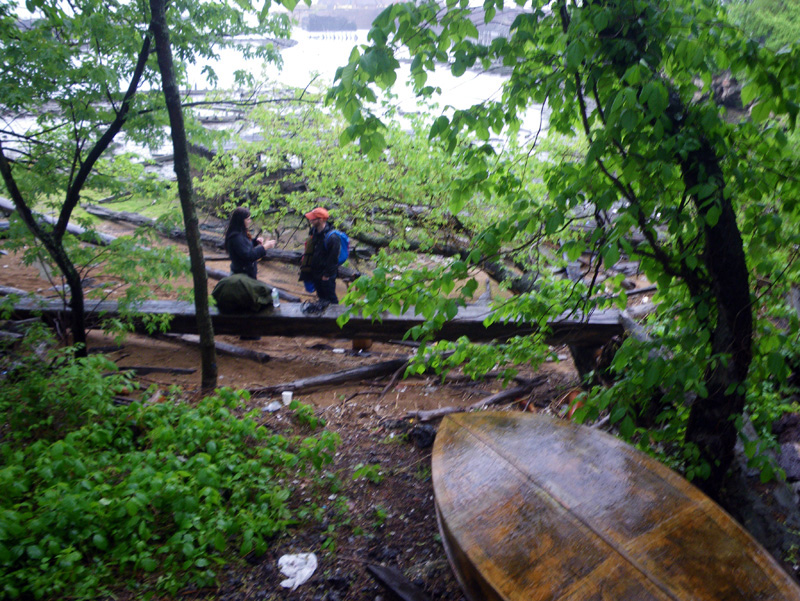
I knew that Moses Gates would come up with a good idea for the ‘mapping’ theme of the Tide and Current Taxi,
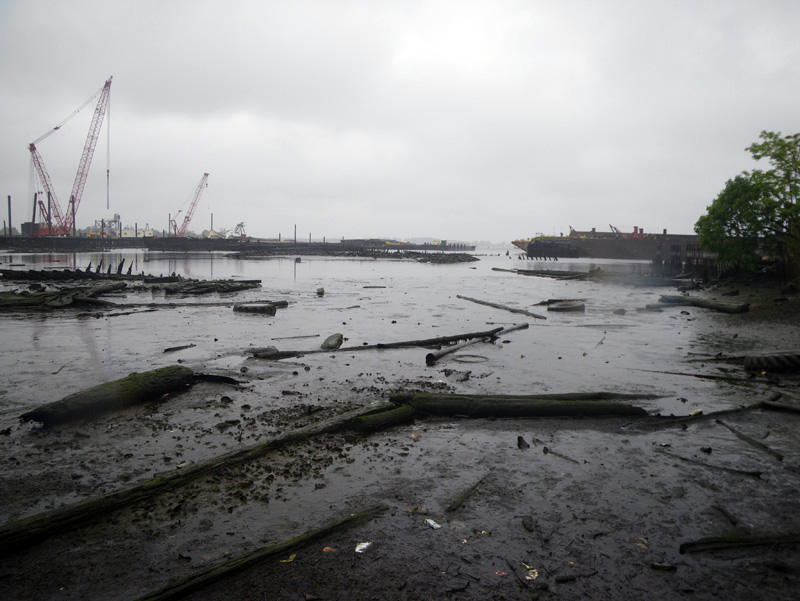
because so many of his projects are about first hand experience of a mapped environment; like his mission to visit every census track in New York City, or his love for exploring bridges and the subterranean.
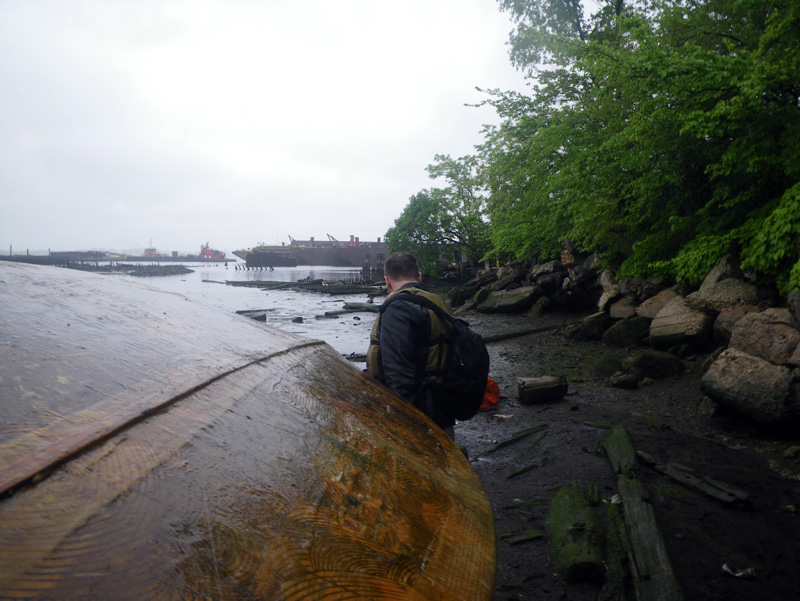
His idea this time was a little different. It was not to make a map, but rather to reveal its folly.
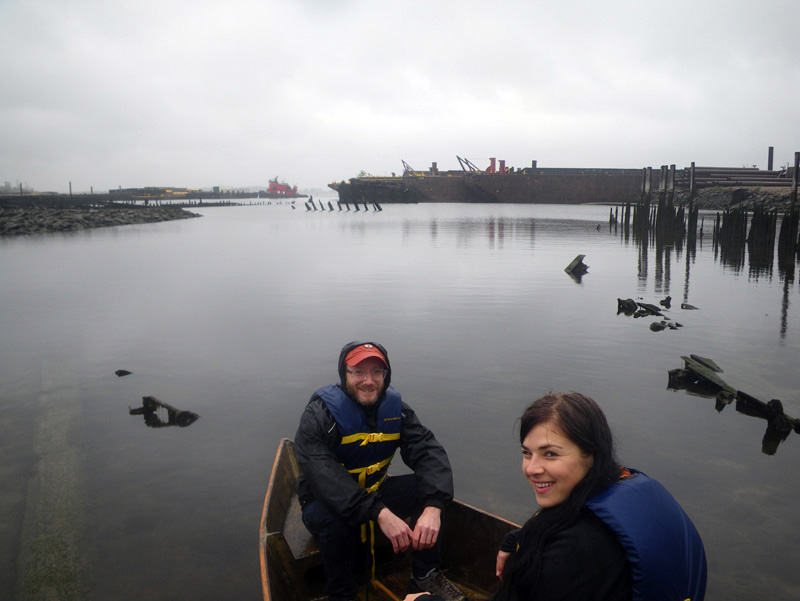
For this mission, we needed a few experts; Marshal Price and Nicolina Johnson,
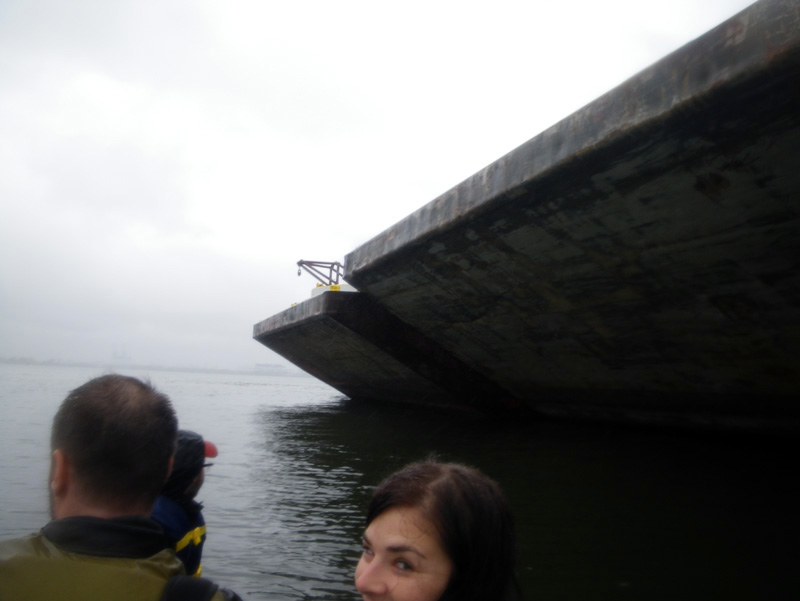
Nicolina because she is a great muralist,
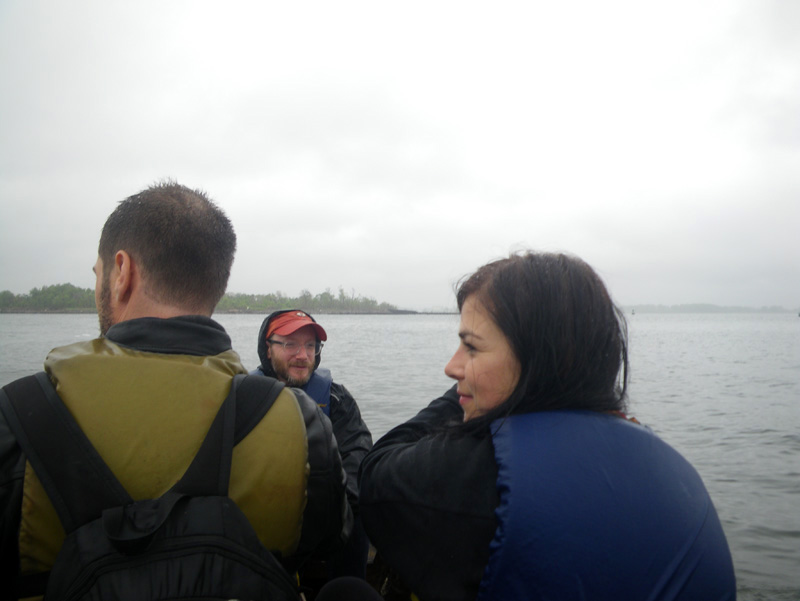
and Marshall Price because he was game.
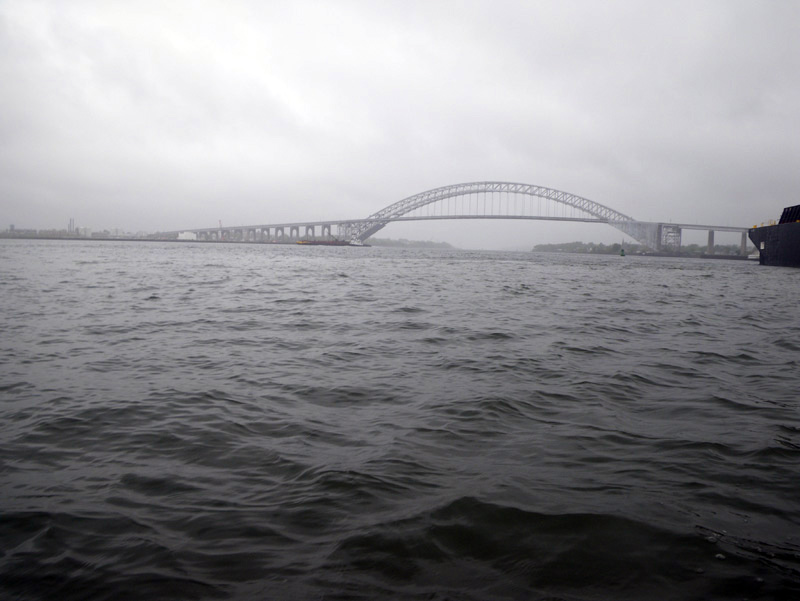
Moses latest map interest has been boundary areas.
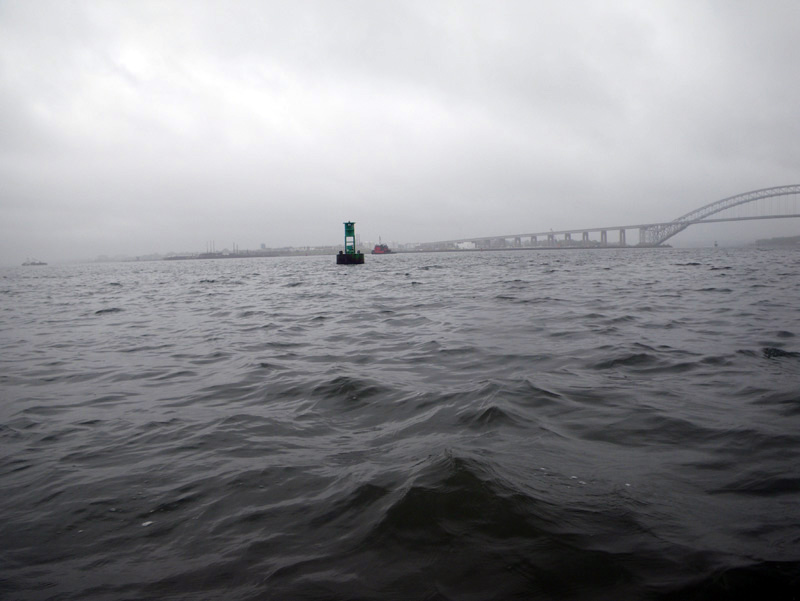
“Something that’s been intriguing me lately,” said Moses, “are land crossings between geographies that are thought of as being separated by water.”
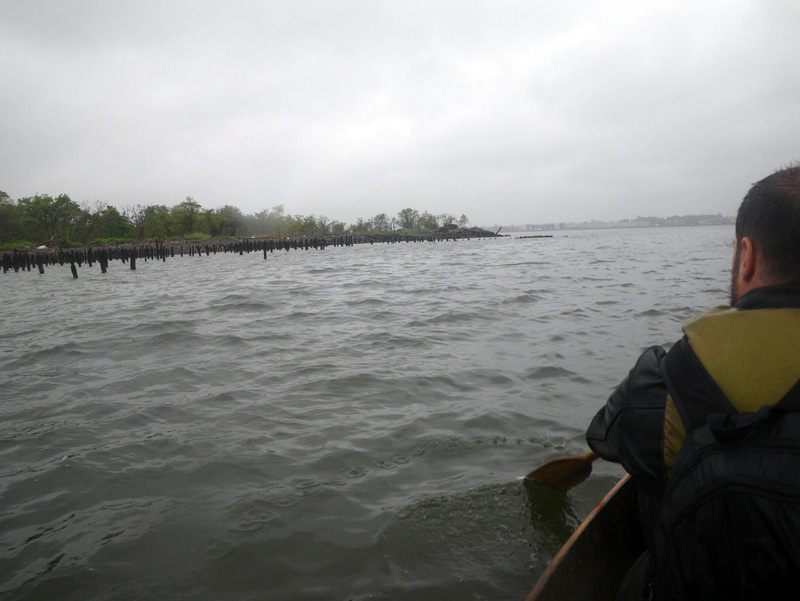
Take New York City and New Jersey for instance. If you look on a map, it seems like the boarder between New York and New Jersey is defined by the Hudson River and the Arther Kill waterway,
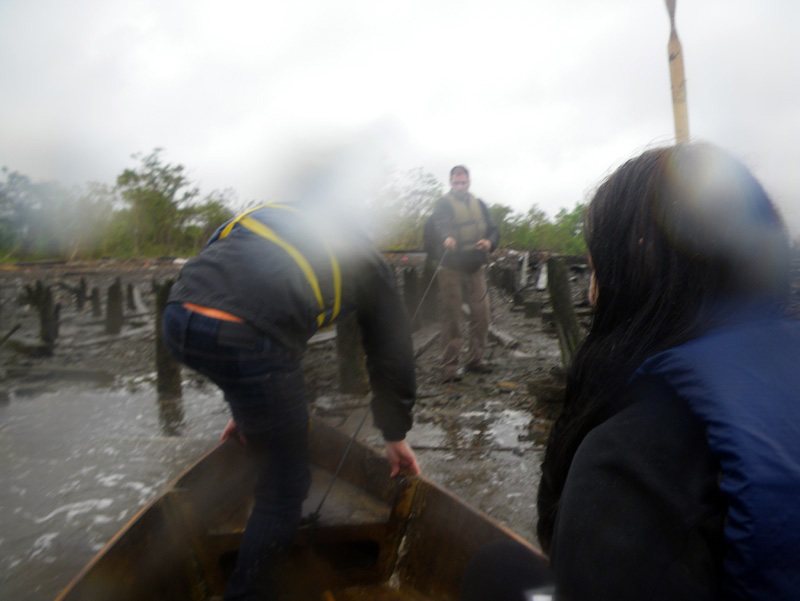
but Shooter’s Island is stuck in between, and the state line runs right through the middle of it.
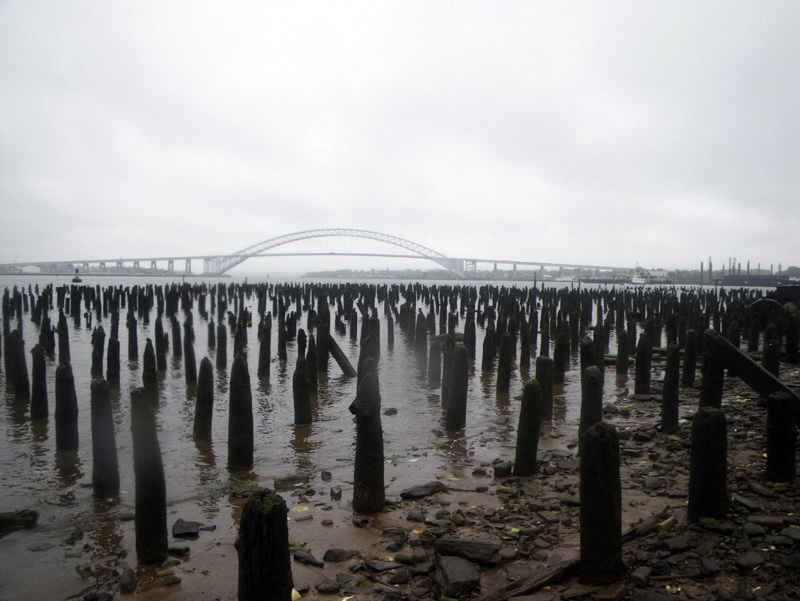
That means that on this abandoned stretch of land, it is possible to walk from New York City to New Jersey. (Incidentally, Moses pointed out one other place that this is possible. The border between New York and New Jersey runs through Ellis Island too. “The natural part of the Island belongs to New York, while the infill belongs to New Jersey.” said Moses.)
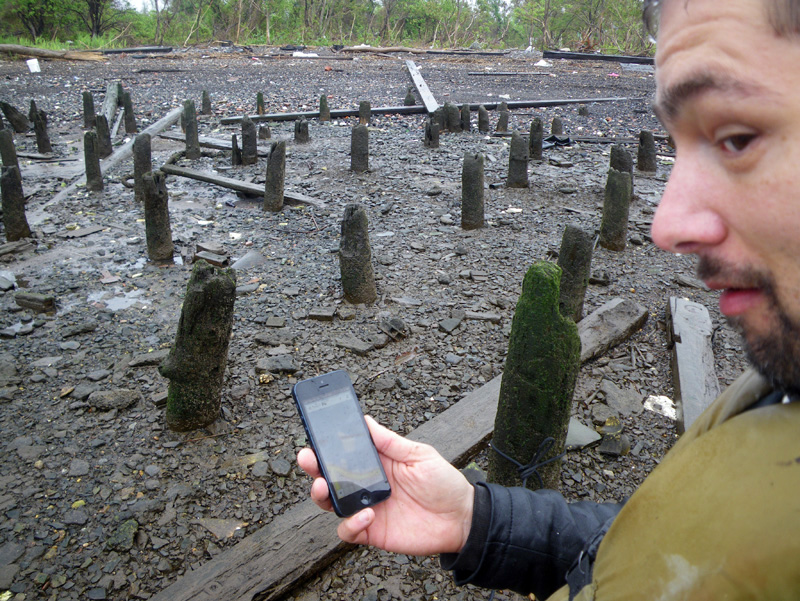
Our first job was to find out exactly where the border lies,
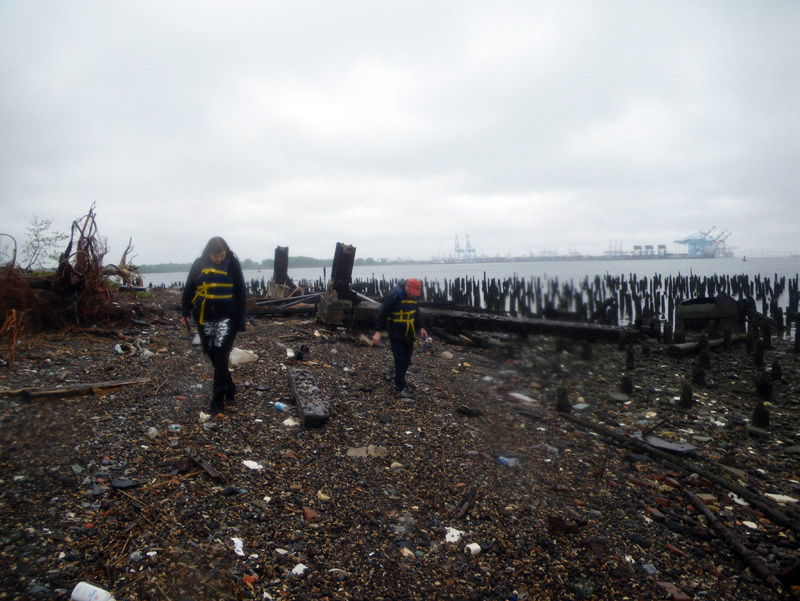
but on the way we started to find something else;
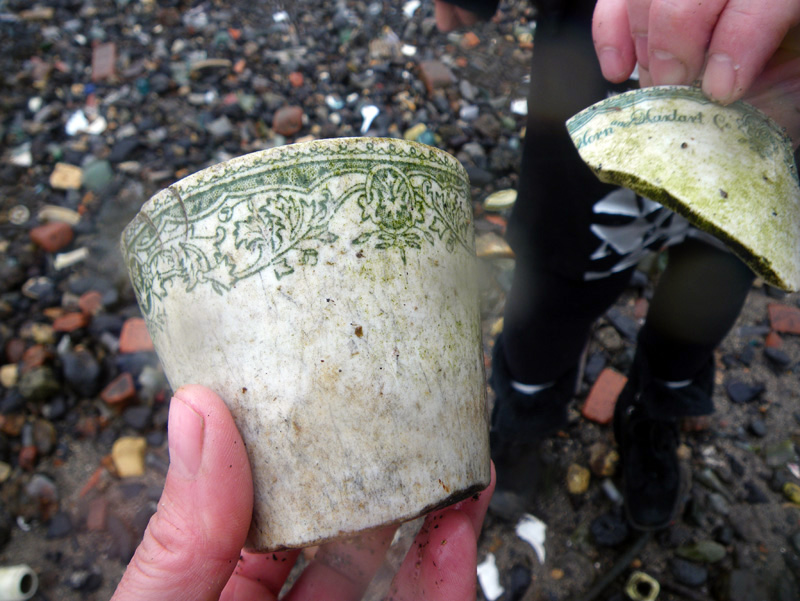
thousands of pottery shards
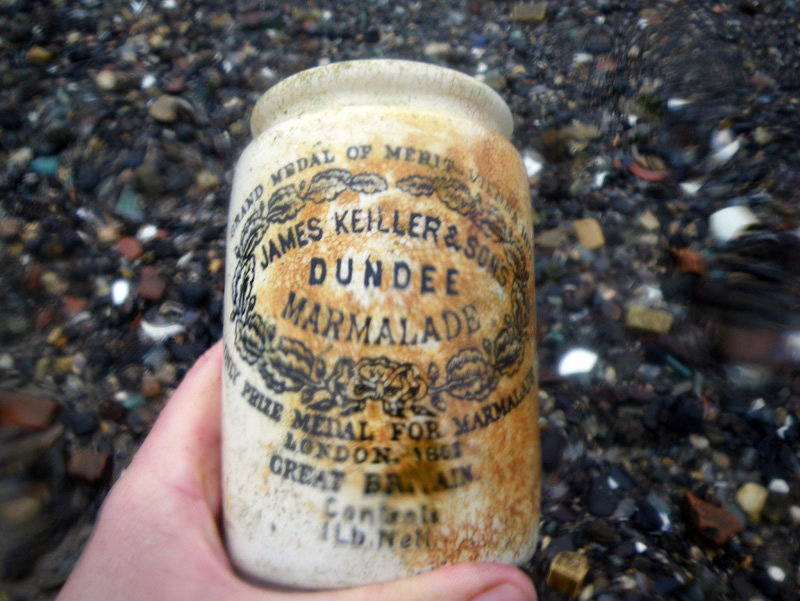
that appeared to be very old.
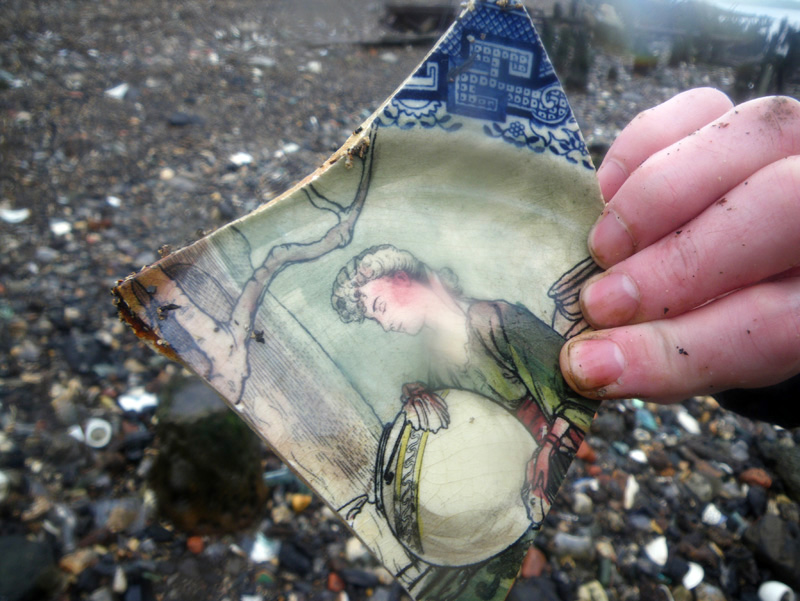
These things must have been washed out of landfills and deposited along the Arthur Kill.
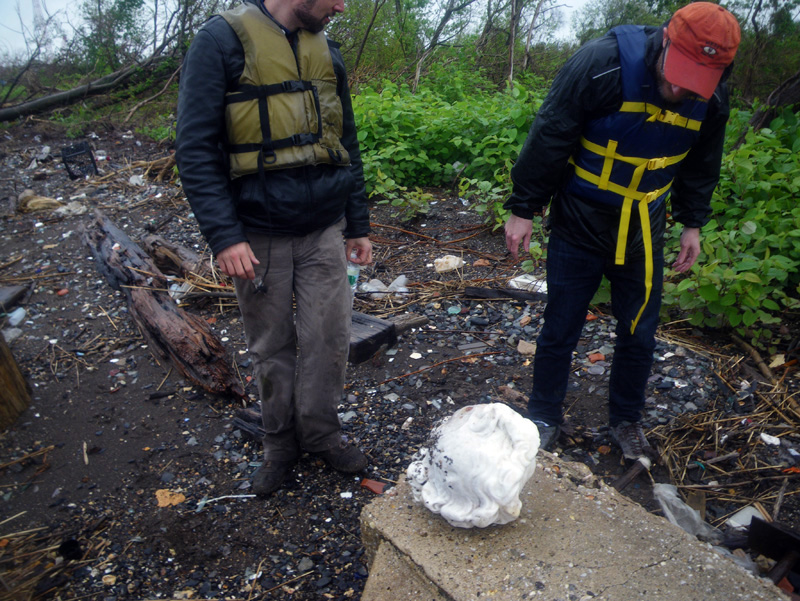
We found a carved marble head of hair,
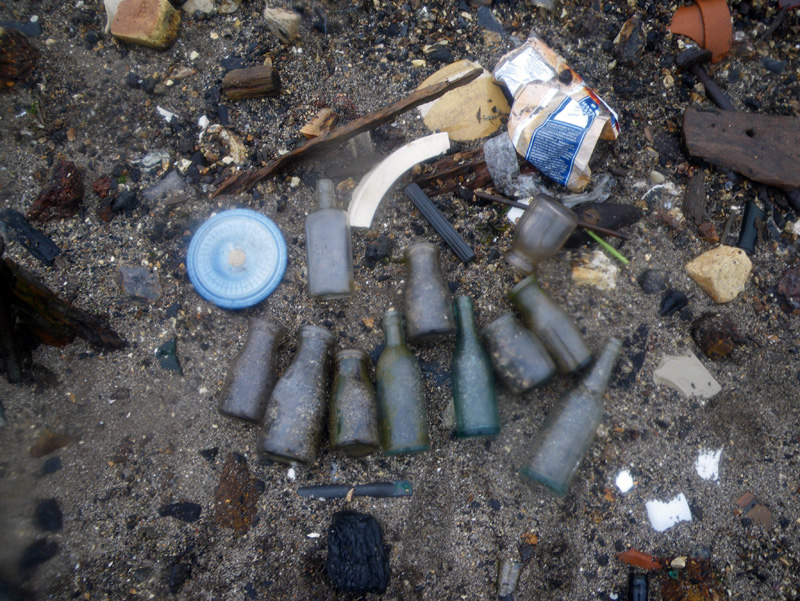
and a stash of bottles that another beach comber left behind.
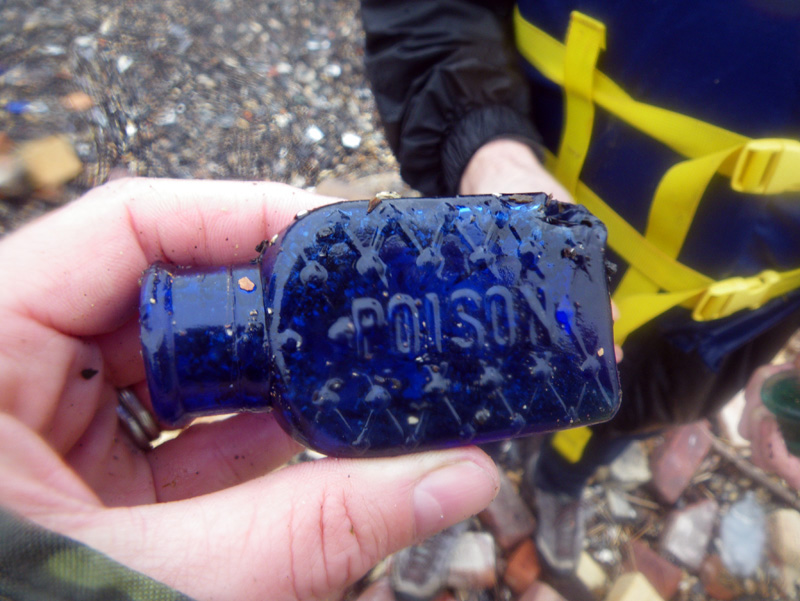
Marshall found this amazing poison bottle, and I imagined the tide unearthing long forgotten evidence of some victorian parricide.
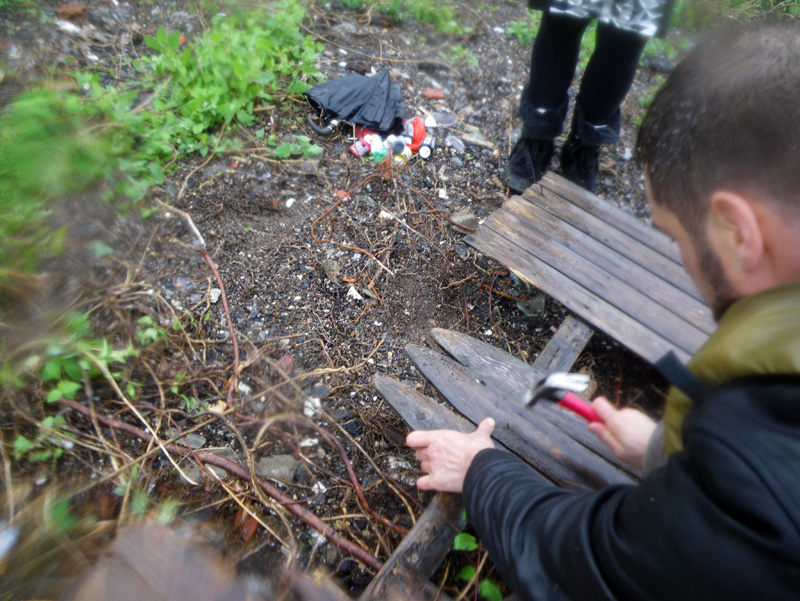
“But enough of all that,” Moses was thinking, “we’ve got work to do.”
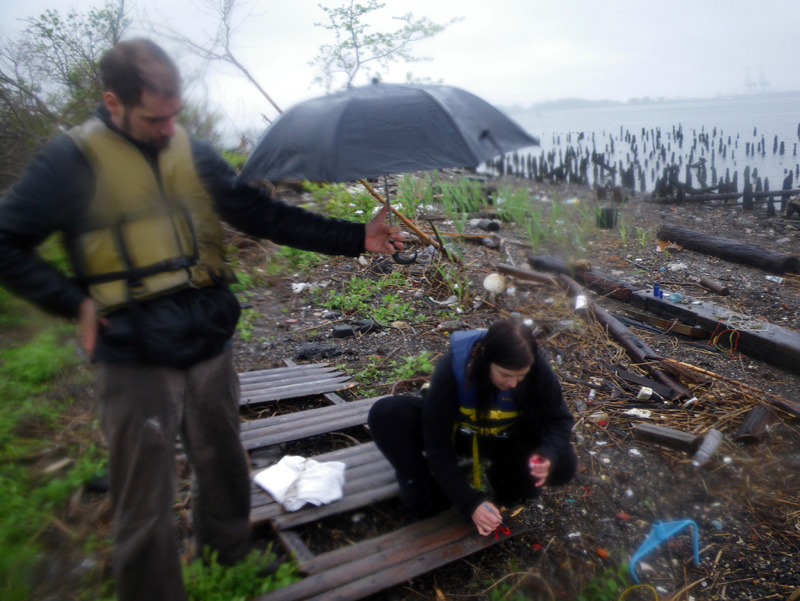
We wanted to make a sign for the border of New York City and New Jersey, so people will recognize the unique crossing oportunity that this border island offers.
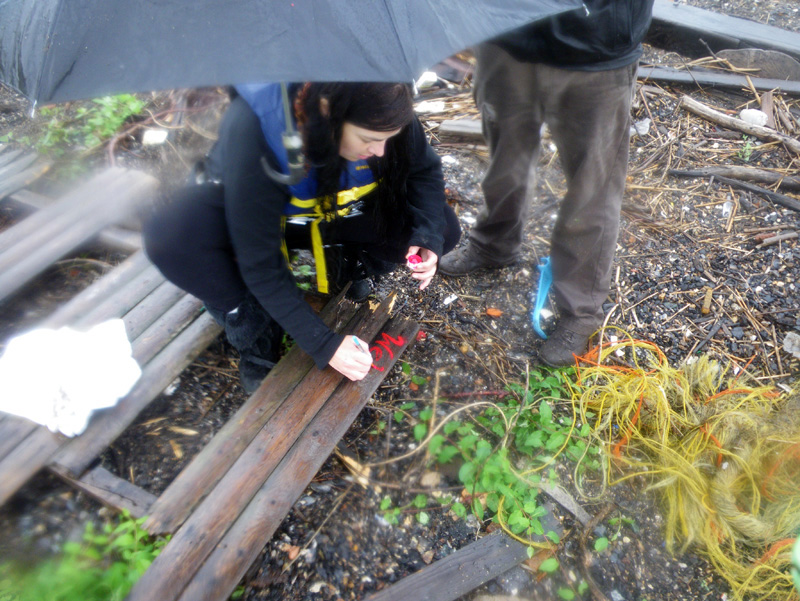
Nicolina was perfect for the job. She is an experienced mural painter and public artist.
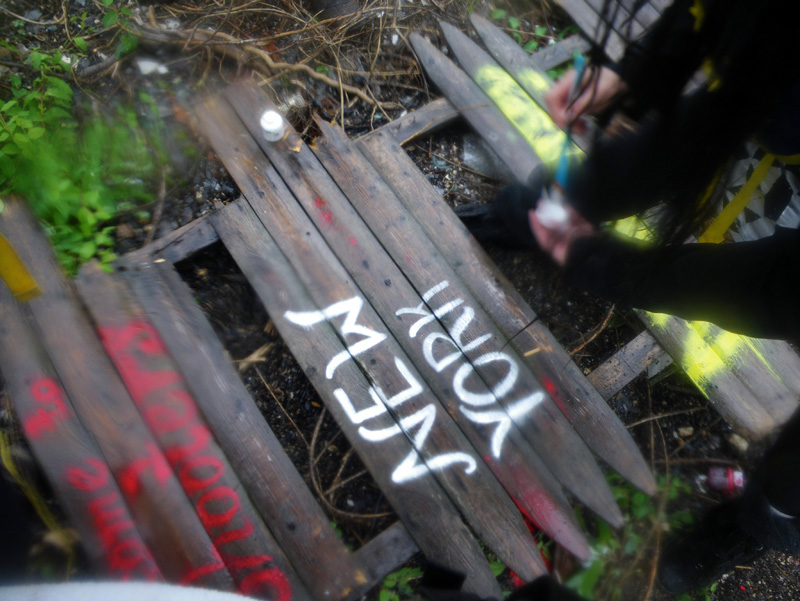
A few years ago, she traveled with Maxine Nienow to Brazil, where they crafted a giant moving mural atop fishing boats in the Urca harbor.
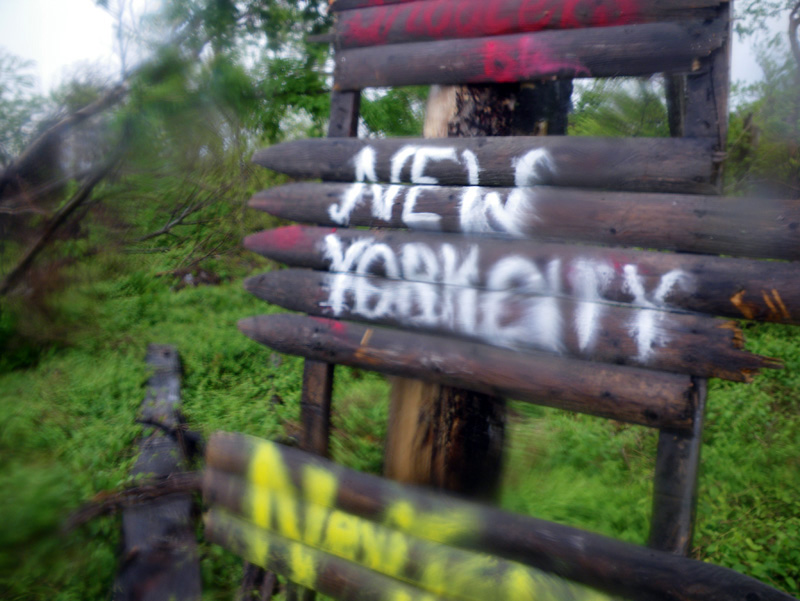
The sign began to wash away before it was even done.
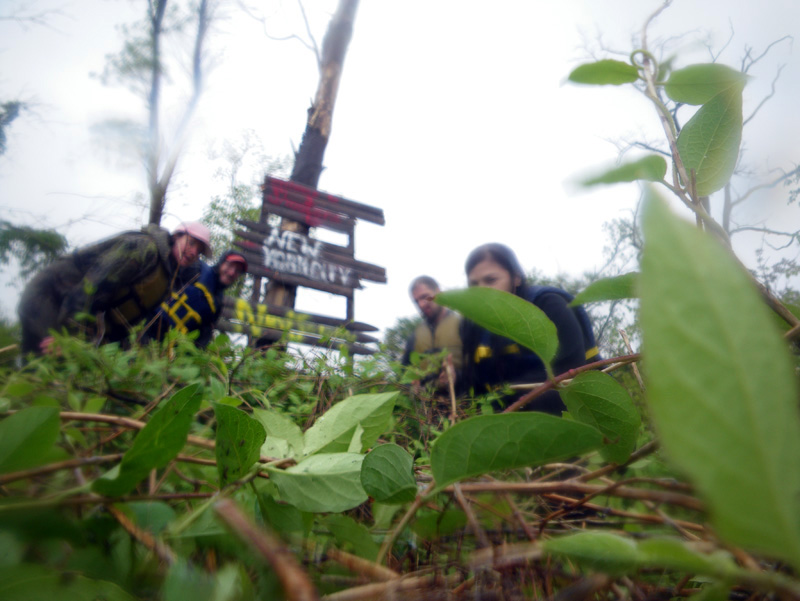
“Maybe the island is telling us something,” said Moses,
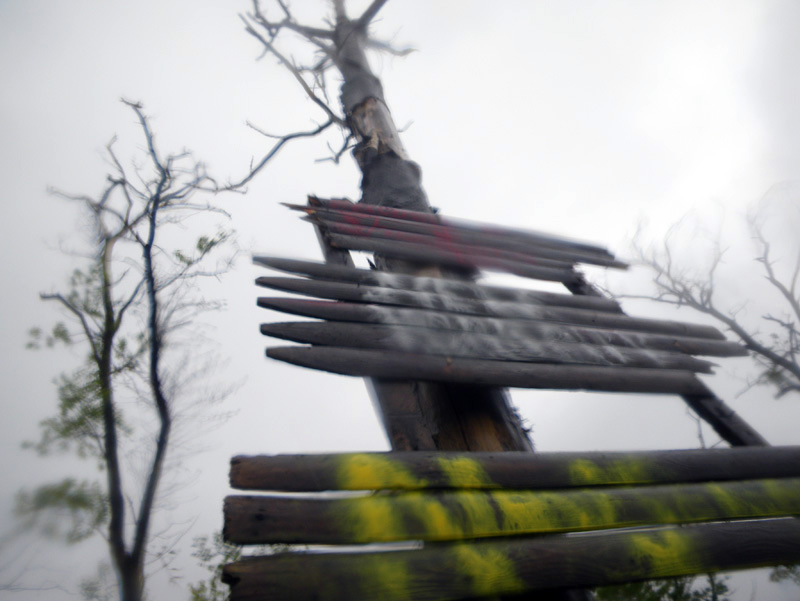
“maybe it doesn’t want to be delineated,”
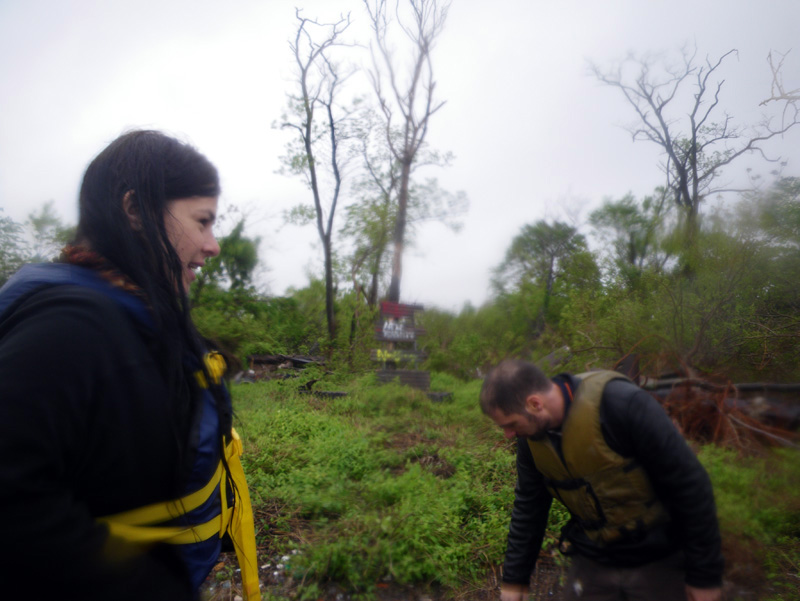
“like it has no use for the borders and designations that humans make.”
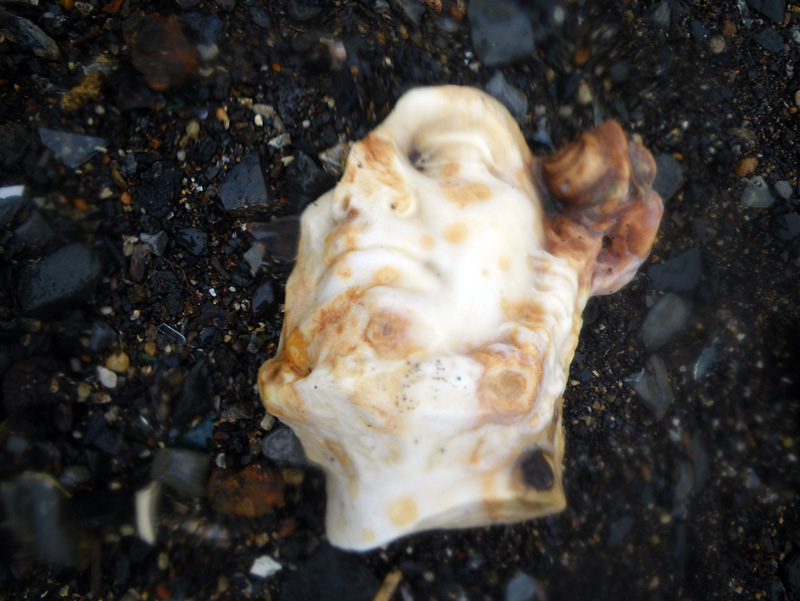
On the way back to the boat, I found the most amazing thing I have ever found in the harbor. It was lying about 20 yards from where we found the marble head and fit roughly where the head’s face would be. Marshall thought that the marble could possibly have been carved by the Piccirilli Brothers, famous stone carvers who made most of the monumental sculpture in New York around the turn of the last century. I couldn’t help but think that Marshall had helped cull this head from the deep. He is a curator at the Museum of the National Academy, an historic art association who’s esteemed membership includes two of the Picirilli Brothers.
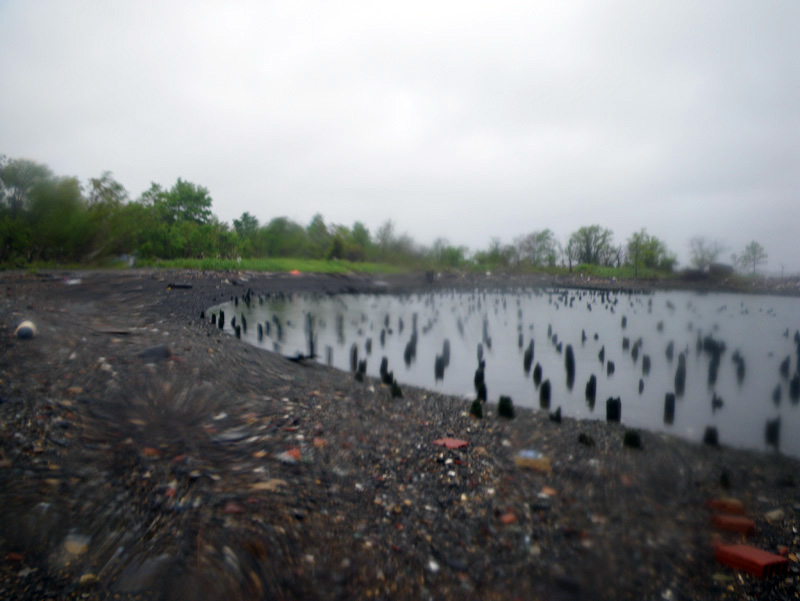
I marveled at the way Hurricane Sandy had rearranged the island.
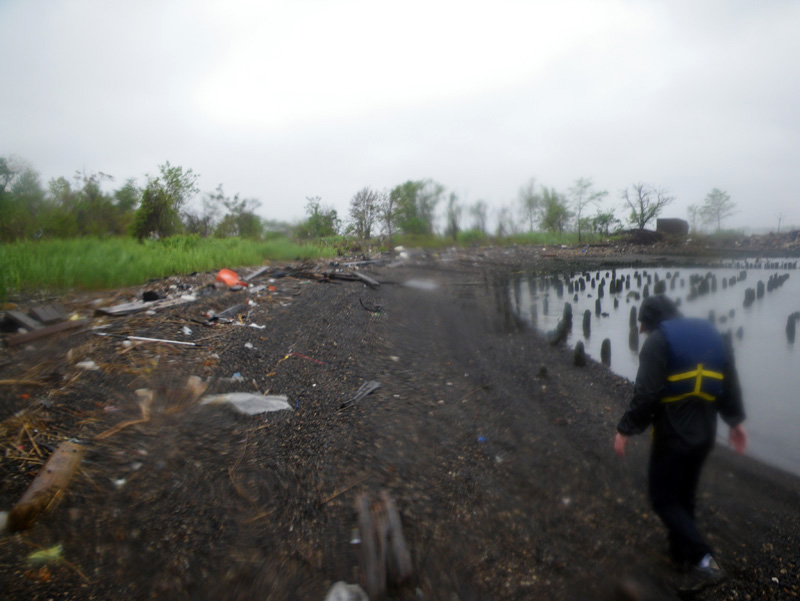
I took a picture on this spot last year when it was covered with driftwood and debris.
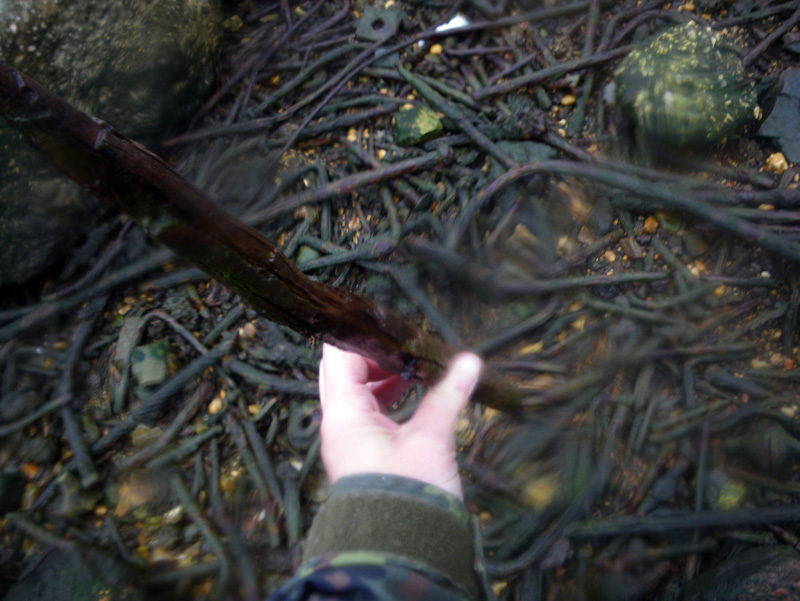
The only things left are ones that won’t float away,
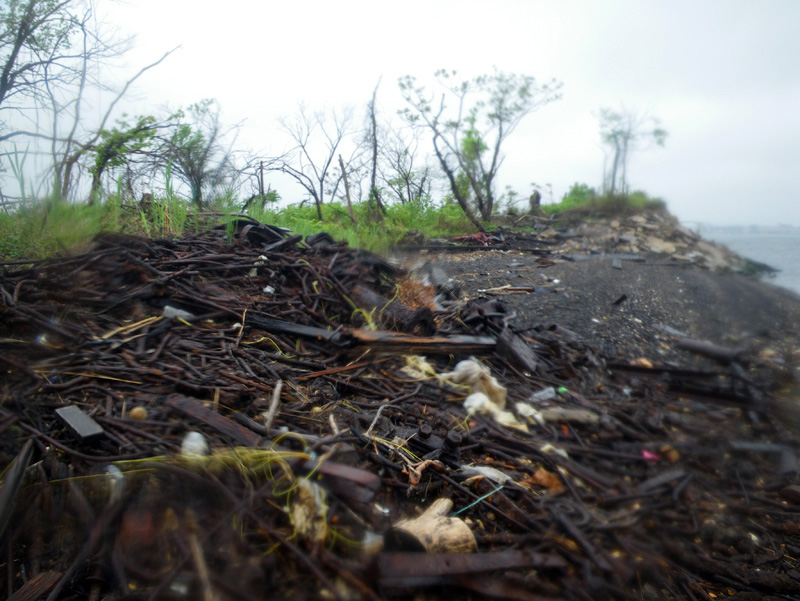
things left over from 100 years ago, when Shooter’s Island was a shipyard. These iron fasteners will probably be here in some form for another thousand years.
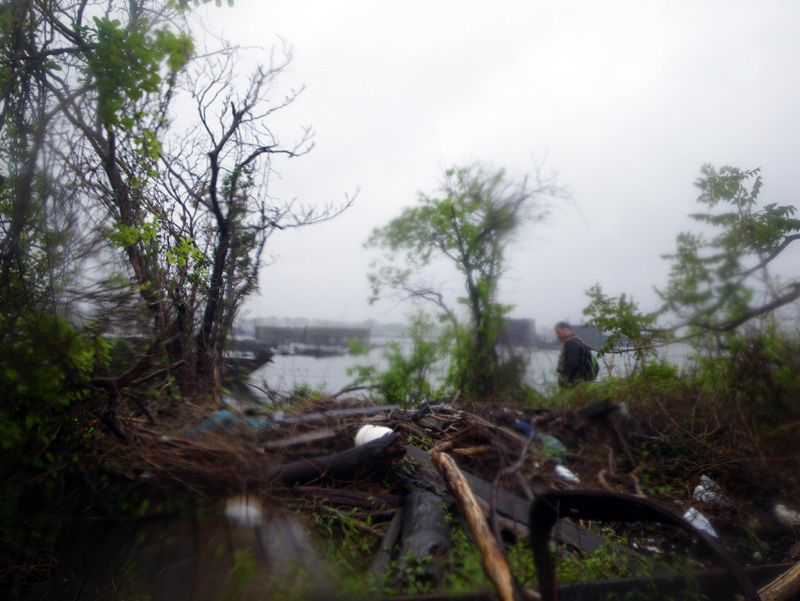
Moses decided to circumambulate the island,
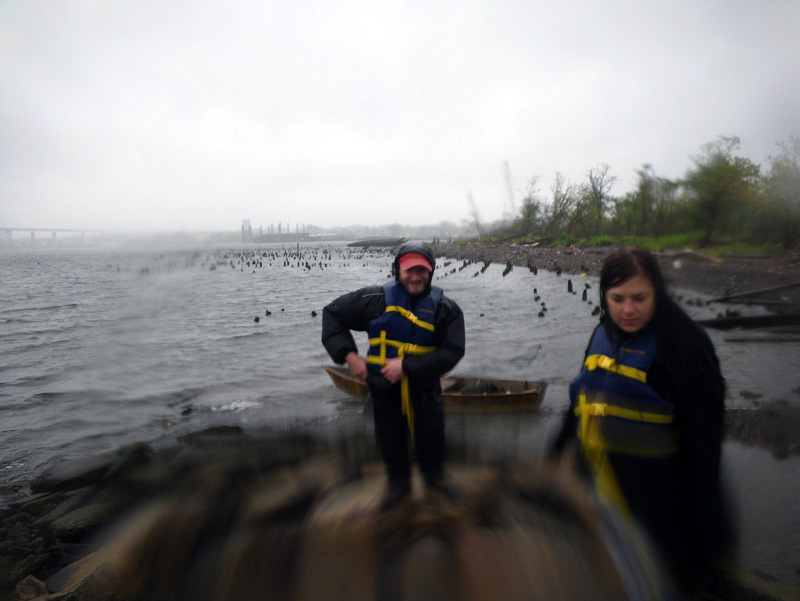
while Marshall, Nicolina and I walked back the way we came,
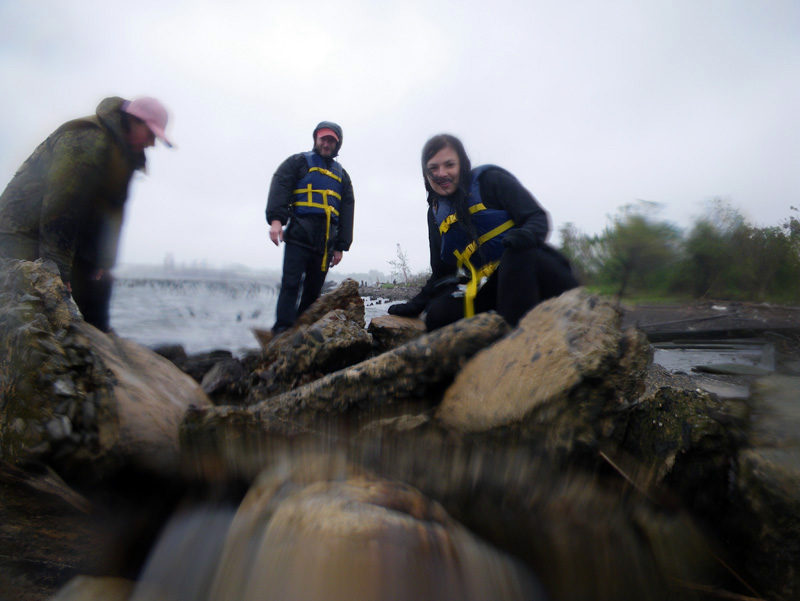
and posed for a few pictures.
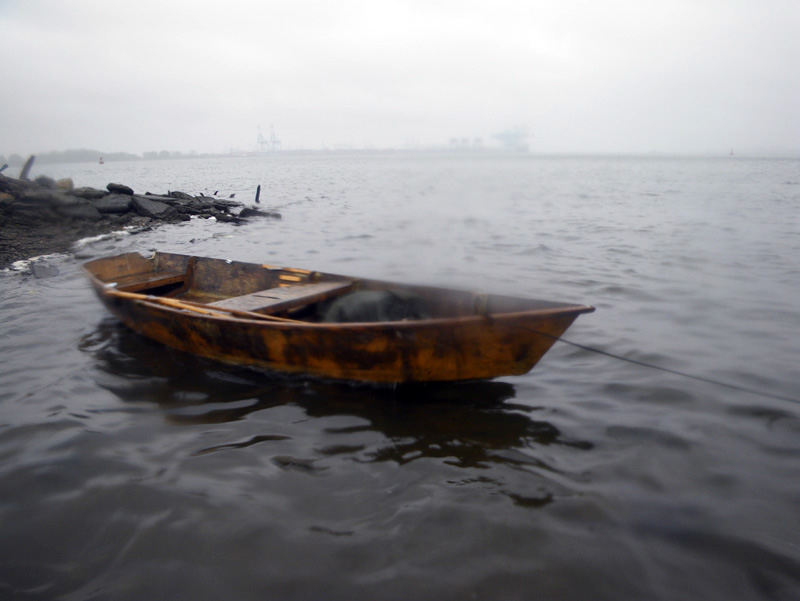
The tide had come in while we were walking, and the boat was a few inches from setting itself free.
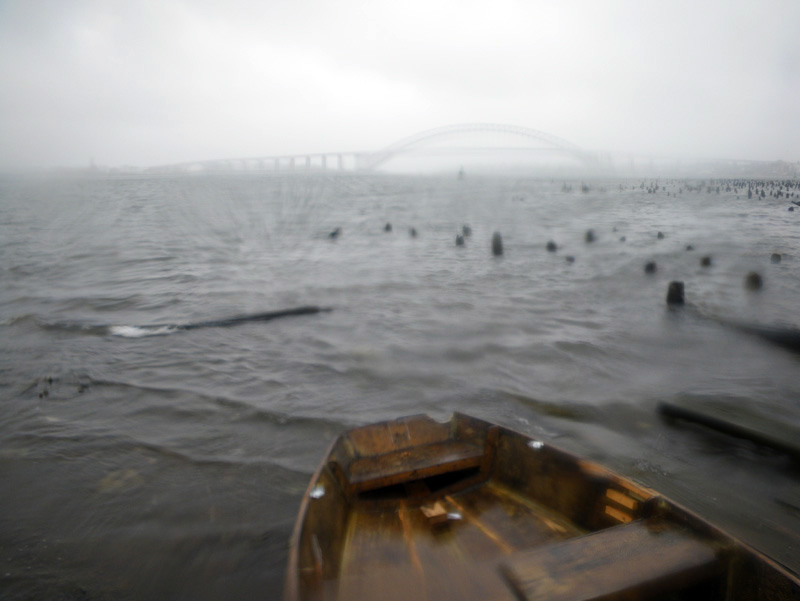
The wind was even more worrisome.
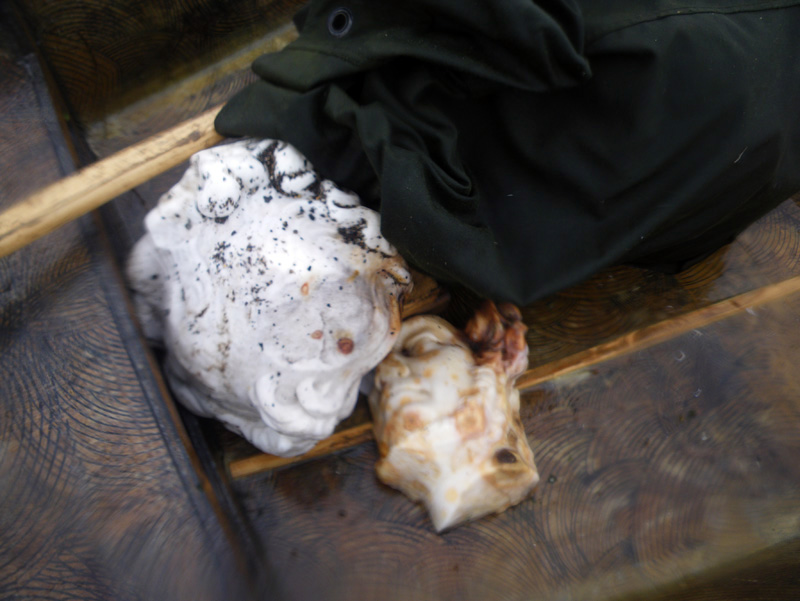
I couldn’t bear to leave the marble head behind,
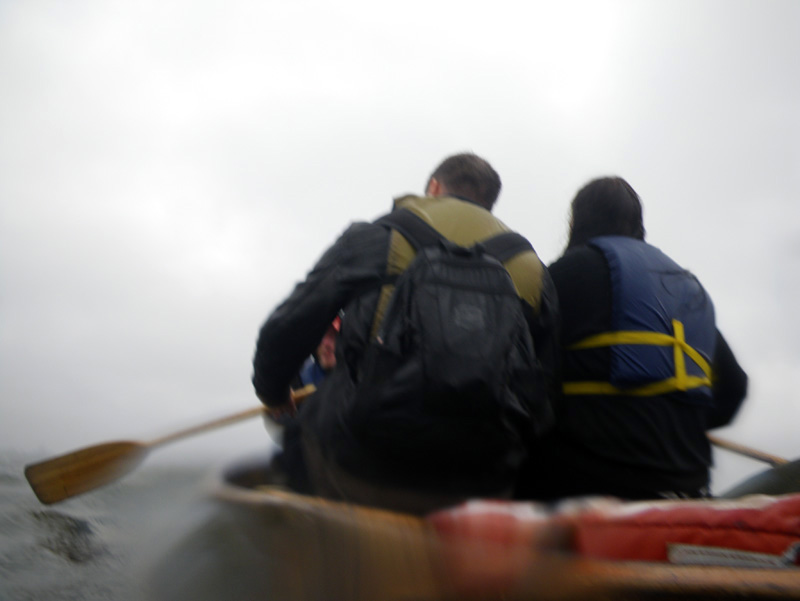
but this and the added weight of our soaking wet gear brought the boat’s waterline dangerously high.
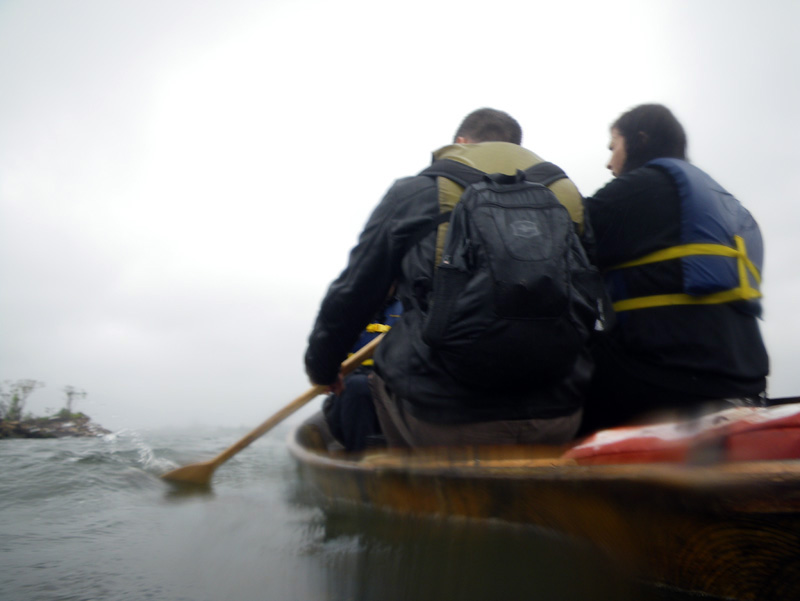
My heart was racing as we let the wind push us down the length of Shooter’s Island.
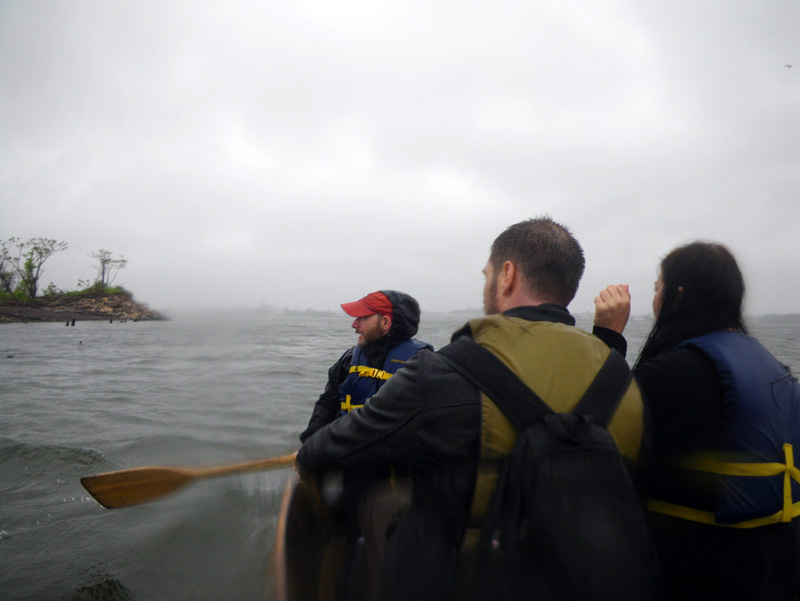
I figured we would have some protection on the leeward side.
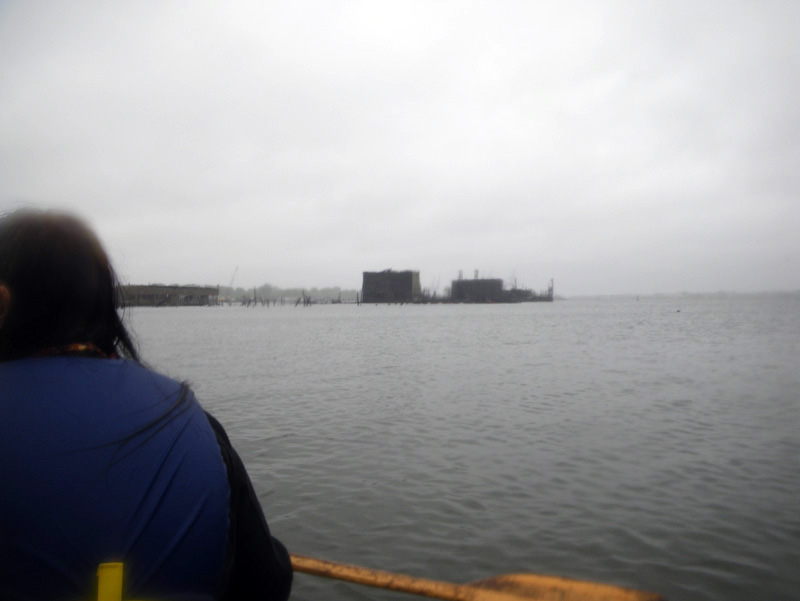
As we rounded the corner, the waves flattened out and the beautiful old dry-docks of the Townsend-Downey Shipbuilding Company floated into view.
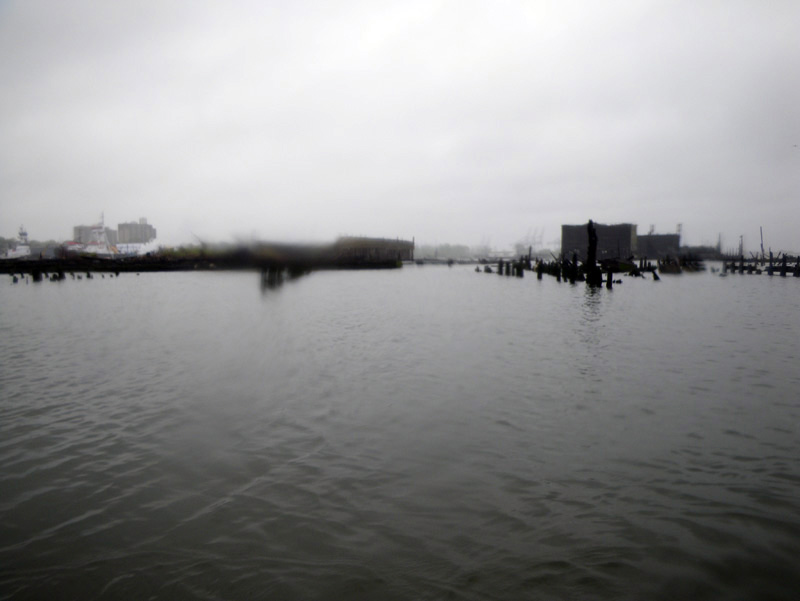
We picked our way carefully through the the old ship parts,
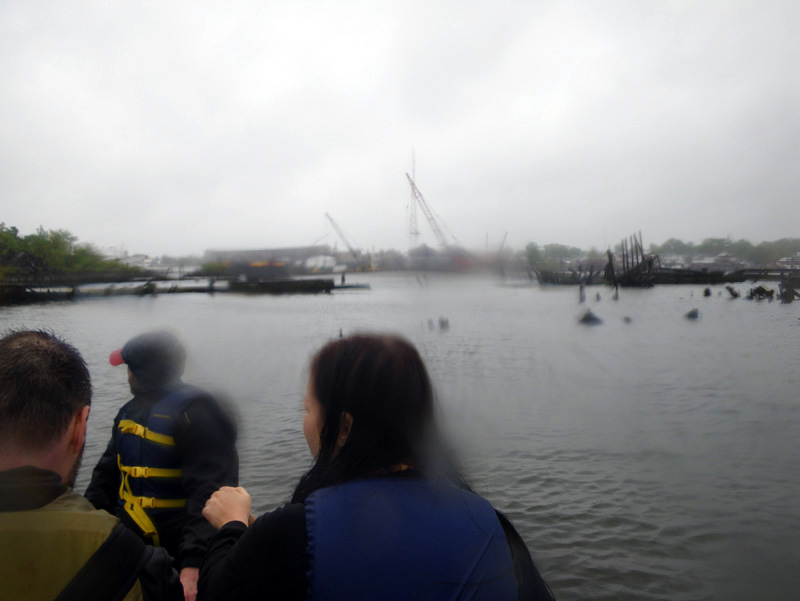
but we had one difficult stretch left to cross. The narrow channel between us and home was turning into a treacherous combination of steep waves and tug boat traffic.
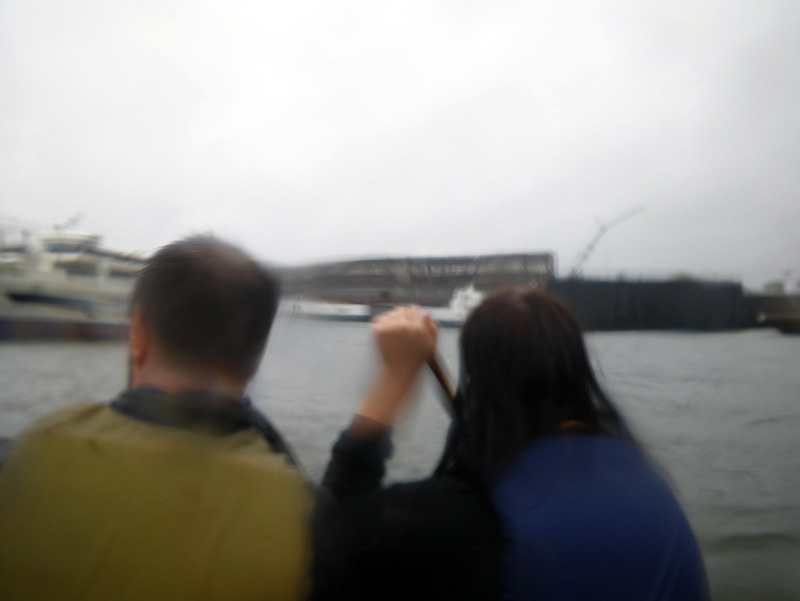
It was too hard to get back to our launching point,
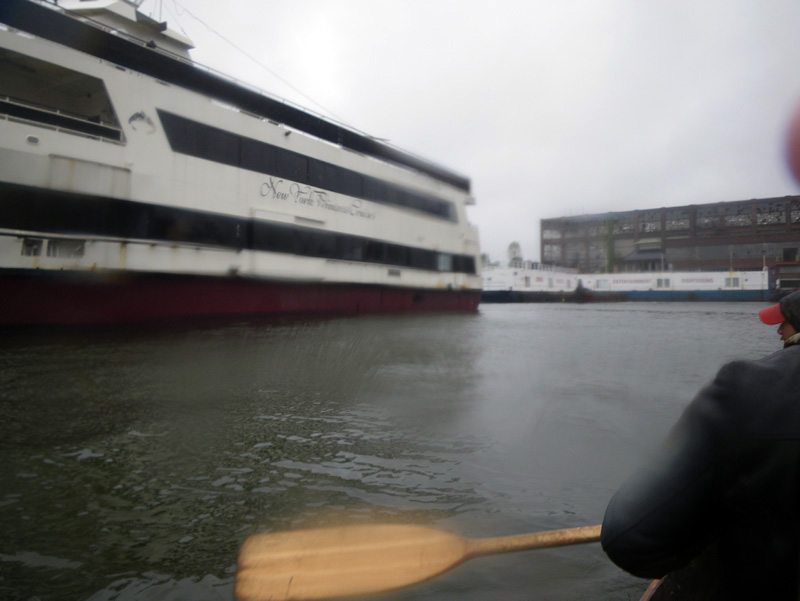
so we pulled into the little port of a towing company,
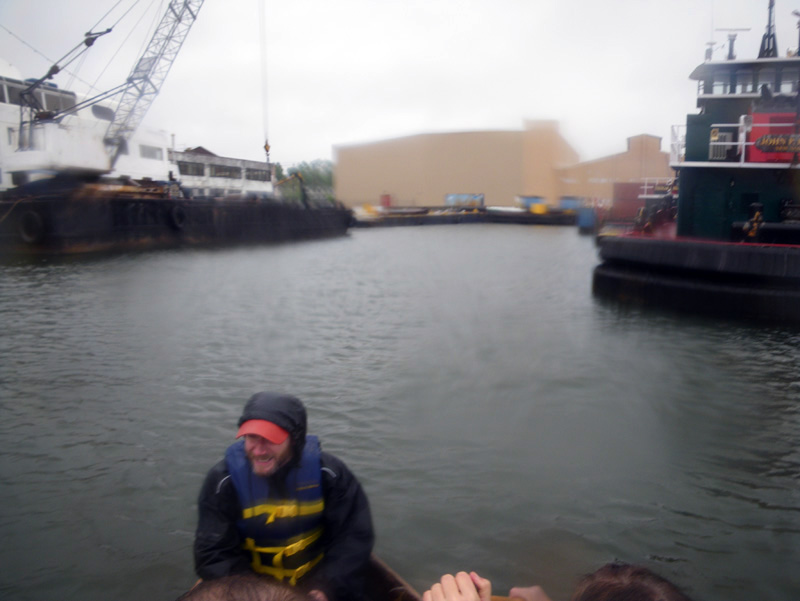
and paddled quietly around, trying to find a way out.
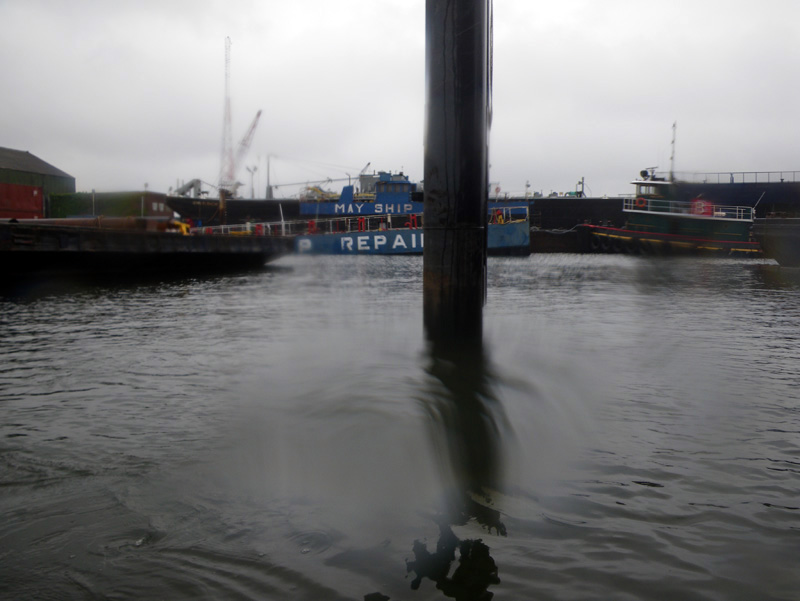
The docks were quiet on a weekend morning,
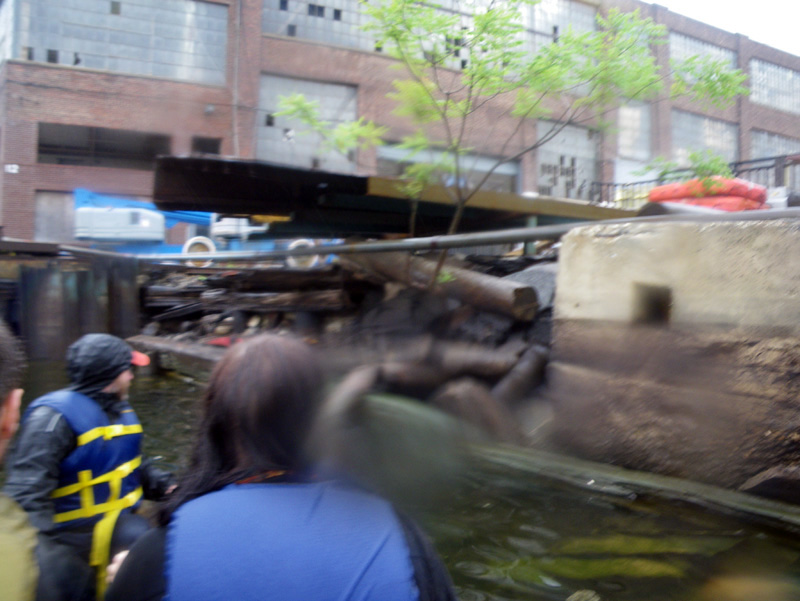
and Marshall went up scout a way out to the street.
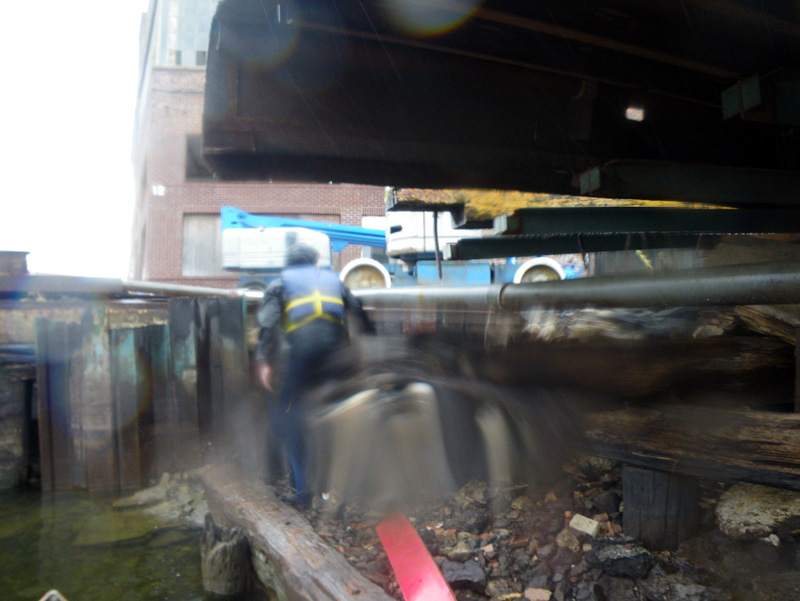
“There’s a fence,” said Marshall, “but it’s open.”
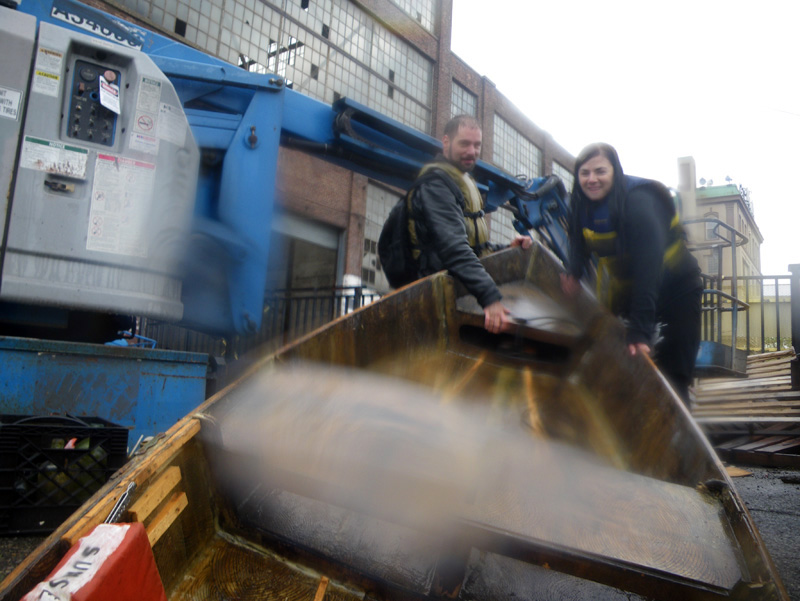
We pulled the boat into the yard,
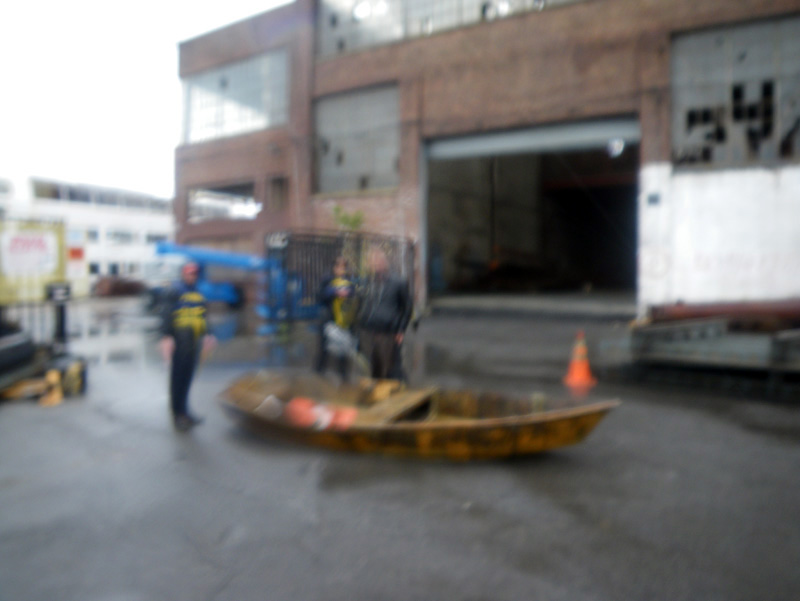
cold, soaked, and intrepid.
↑ Return to Top of Page ↑